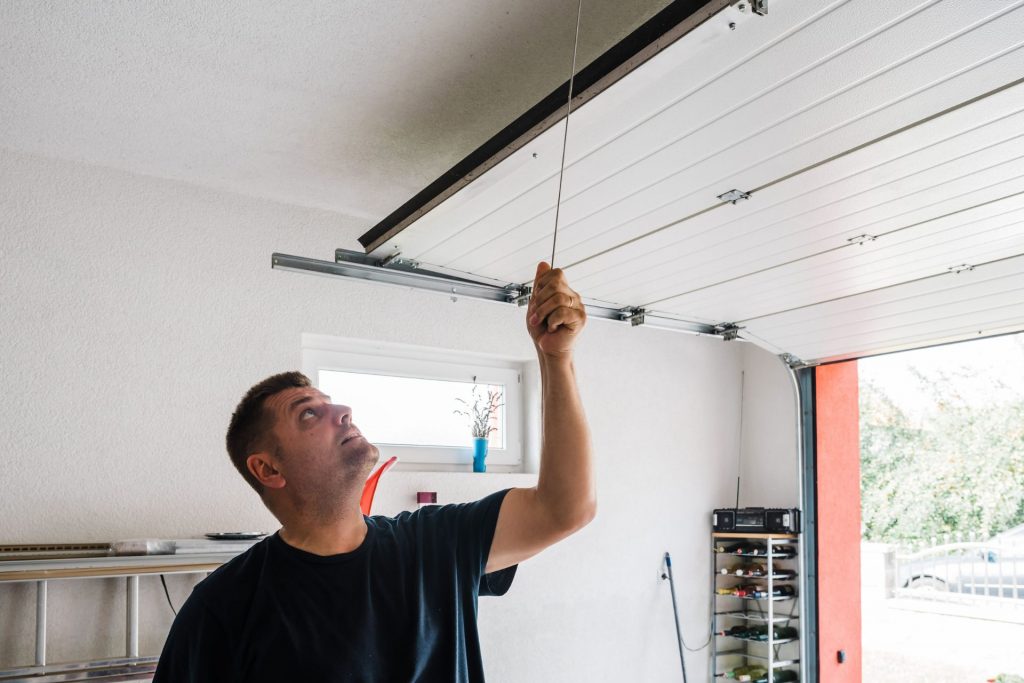Your garage door is exposed to the elements year-round. Think about how much your appliance deals with as the seasons change. During the rainy seasons, it is berated with water and wind. When it is warm, the scorching sun bears down on it. Then come the winter months, bringing snow, hail, and salt to bear upon the door. That is a lot to handle. Imagine standing outside all day, every day as the weather changes with little to no shelter. While your door is equipped to deal with these conditions, it does need a lot of TLC and preventative measures to be able to function properly. One of the ways you can help protect your garage and your door is by purchasing garage door seals. Keep reading to learn everything you need to know about garage door seals!
What Are the Different Types of Garage Door Seals?
There are several different types of garage door seals. Each comes with its benefits. Here are four kinds of seals you can purchase for your appliance:
1. Bottom Seals
Bottom seals are pretty self-explanatory. They go under your garage door, helping to prevent moisture and pests from creeping inside the space behind. Bottom seals come in a variety of types. J-type seals are made of rubber or vinyl. They form the shape of a “J” when installed, and they can be used for both the bottom and sides of your door. T-type seals are crafted from aluminum, PVC, or steel. They are shaped like an inverted “T.” Bulb seals are flat on the bottom and T-shaped at the top; they are especially helpful for garages that lack an even surface, as they still can seal and protect despite this problem. Finally, there are brush seals. Brush seals use little bristles to keep out debris and protect the garage.
2. Threshold Seals
Threshold seals also go under your garage door. But unlike regular bottom seals, they don’t attach directly to the door. Instead, they are installed on the floor of your garage. These seals are especially effective when it comes to keeping water out.
3. Weatherstripping
Weatherstripping consists of thin strips of rubber or vinyl. They are extremely versatile. You can install weatherstripping along the sides of your garage door, as well as the top and bottom of the appliance. Weatherstripping can also be used between your garage door panels, ensuring an airtight seal against the elements.

What Are the Benefits of Garage Door Seals?
Garage door seals provide numerous advantages. The first is obvious. Seals prevent water from entering your garage, which in turn prevents issues like mold and mildew, which are hazardous to your health. Protecting your garage from water damage also ensures that you will not have any rotting or warping wood or deterioration of your floor.
The other benefits are less obvious but equally important. Garage door seals prevent pests from entering your space. This includes spiders, snakes, roaches, rats, and mice. Rodent prevention is important when fall rolls around and these creatures start to find a home; rodents carry disease and can cause destruction by chewing through your insulation, electrical wiring, and wood.
How Much Do Garage Door Seals Cost?
Garage door seals are an affordable feature for your home. Usually, they cost between $60 and $180. It depends on what type of seal you buy and how big your appliance is. If you are on a budget, you should be able to find a cheap option that will serve you well.
We Can Install Garage Door Seals!
After reading our blog, perhaps you are ready to get garage door seals for your appliance. That is an excellent choice, and we are ready to support you in it. Contact our team today for assistance with garage door seals!





